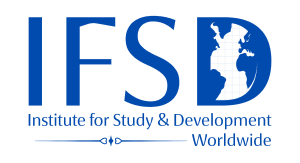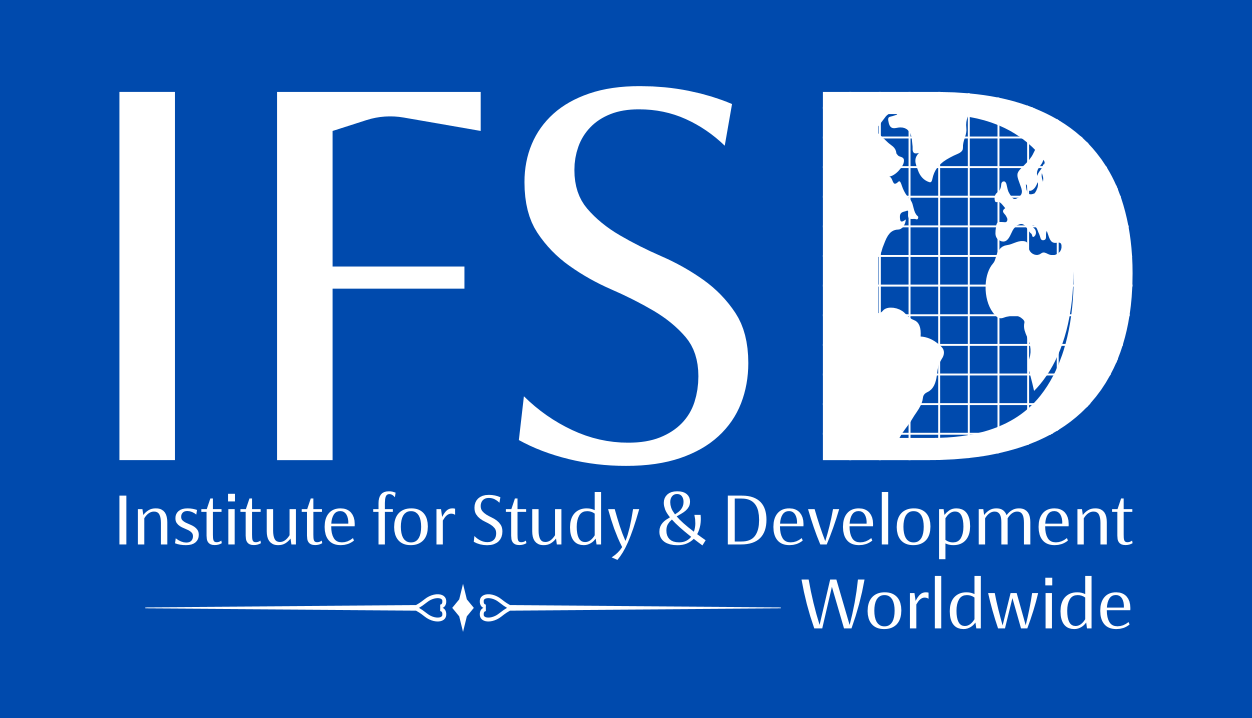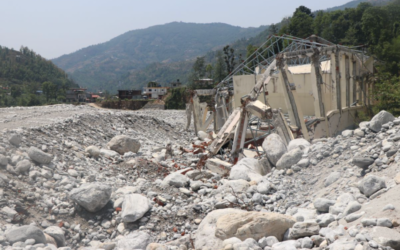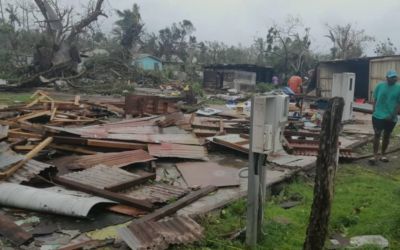Episode III – Declining springs in Nepal
Report summarising the event proceedings and outcomes

Overview
The Himalayan Spring Water Policy Lab (HS – WPL) forum explored the ongoing situation of drying springs and the possible approaches to address it particularly in the Himalayan region of Nepal. A region where springs have dried at an alarming rate in the past two decades. The forum was held virtually on Monday, 19 September 2022 with 15 people attending from Asia and Australia.
The forum was jointly organised by the Institute for Study and Development Worldwide (IFSD), South Asia Institute of Advanced Studies (SIAS), Nepal Water Conservation Foundation (NWCF), Australia India Water Centre (AIWC), and Centre for Ecology Development and Research (CEDAR).
The forum aimed to foster a broader discussion and deeper understanding on the situation drying springs by:
- Sharing knowledge on problems and potential solutions around mountains springs specifically in Nepal
- Stimulating collaborative learning approaches to find solutions, through Water Policy Lab
| Agenda | Speakers |
| Welcome and introductionsIdea and objectives of Water Policy LabPresentation of speakersDiscussionClosing remarks | Dr. Basundhara Bhattarai, Senior Gender and Social Inclusion, IFSDDr. Hemant Ojha, Principal Advisor, and Priyanka Gurung, Research Officer, IFSDMonika Giri, Research Officer and Binod Adhikari, Researcher, SIAS Dr. Ngamindra Dahal, Chairperson, NWCFDr. Vishal Singh, Senior Fellow and Director Research, CEDARProfessor Basant Maheshwari, Western Sydney University |
Welcome and Introductions
Dr. Basundhara Bhattarai introduced the forum by talking the devastating situation of drying springs in the region and how it is adversely affecting people and our ecosystem. She also mentioned how organisers of this forum have continuously made efforts to advance the idea of policy lab to facilitate problem solving through collaborative learning. This was followed by a general overview of the event agenda and the introductions of Dr. Ojha and Ms. Gurung.

Idea and Objectives of Water Policy Lab and Forum
Dr. Hemant Ojha introduced the forum’s two objectives mentioned above and stated his interest in learning about work done on springs at the local level by SIAS and NWCF. He mentioned the potential expansion of this forum to include other regions and countries such as Bhutan, Northeast India, Western Himalayan region covering Pakistan and Afghanistan as well in the upcoming episodes.
Priyanka Gurung further emphasised the severity of problem of drying springs in the Hindu-Kush Himalayan region. Drawing on insights shared by speakers (Dr. Shive Prakash Rai and Dr. Vishal Singh) from the second HS-WPL forum meeting held on 4 August 2022, she mentioned how drying springs is a very complex multilayered problem which requires a transdisciplinary approach towards solving it. She further emphasised the need for “translational research” as introduced by Dr. Singh, to highlight the importance of making science simpler and accessible for everyone to understand. Most importantly, collaborative approaches are needed to bring together diverse stakeholders to solve the issue.

Importance of Policy Lab and how Policy Lab and Forum are connected?
The problem of drying springs is a multi-layered problem requiring collaborative efforts made through partnerships among communities, researchers, and policy actors. One way to initiate and promote collaboration which IFSD has been actively involved in advancing is the Policy Lab method. It is a collaborative space where researchers, practitioners, communities, even policymakers come together to discuss the problem and find possible solutions to it. An example mentioned to explain policy lab was the research done in Diktel by Monika and Binod. All of the activities from local actions to community discussions done are all part of their policy lab.

At IFSD, while working on applying collaborative approaches such as the policy lab in different areas, Priyanka noticed how focused efforts of actions can be linked to wider sharing forums for better outcomes. So, a policy lab forum is the platform that allows the process of learning from local research, policy experiment, and actions which are further theorised to inform concrete actions. For example, in this HS-WPL forum Monika and Binod will be sharing their learning from their research work in Diktel which will help develop better understanding and relevant strategies for springs management.

Presentation of Speakers
Dr. Vishal Singh introduced the speakers for the session.
Presentation 1: Contestation and Trade-Offs of Himalayan Spring Uses – Binod Adhikari and Monika Giri
Binod Adhikari and Monika Giri shared findings from their research done on spring sources in Diktel, a hilltop town in the lower Himalayan Region of Nepal.
Binod provided a general overview of the rapidly increasing water demand in urbanising towns in the Himalayan region and how it is pressuring the existing water sources. This has resulted in the region being water stressed, leading to competing water demands, and contestations over water sources. This is evident in Diktel where water conflicts have further intensified after the launch of the ADB funded water extension project. From their study, it was found that Diktel has a history of being provided with water projects that have supported their water demands. The recent ADB water project uses three water sources – Ramba, Kaule, and Majha rivers providing water connections to 1049 households. However, all three water sources along with Locha river happen to be the contested water sources in the region.

Monika shared the history, usage, associated conflicts, and current situation of all the rivers. Despite new water supply projects, water sources have always been limited resulting in increasing water conflicts. From the research it was found that the contestations are not only between urban downstream and rural upstream communities but also between communities within the urban or rural areas. While there has been a series of unofficial negotiations between the conflicting communities, most of the conflicts have remain unresolved while some of them have reached a middle ground. However, water conflicts persist as communities struggle to increase their water share. From their in-depth ground level research experience, Monika emphasised on the necessity to conserve the existing water sources to fulfill the growing water demands.

Presentation 2: Rethinking Spring Conservation in Nepal: Emerging Issues and Pathways – Dr. Ngamindra Dahal
From his experience working in the water sector in Nepal, Dr. Ngamindra Dahal provided a national overview on spring conservation and its evolution, followed by the current status of springs, the challenges, and the potential ways to address the challenges in the Himalayan region.
Dr. Dahal mentioned that historically springs have served as a lifeline for millions across the Himalayan region. Springs were considered to be a sacred place and were entirely managed by local communities. However, in recent decades springs have been found to be rapidly shrinking, disappearing or drying which has significantly affected lives and livelihoods. To emphasise on the severity of the problem, Dr. Dahal shared the findings from a key informant’s survey conducted by Nepal Water Conservation Foundation (NWCF) in collaboration with International Center for Integrated Mountain Development (ICIMOD) in 2020 with local government officials from in Churia, mid hills and mountain regions. The survey revealed that 74% of the local governments of Nepal have experienced drying up springs. The major factors identified for majorly contributing to drying springs has been a mix of both human and climate interventions – road constructions and earthquakes. It was also found that the main priority for municipalities with regards to protecting springs is on plantation followed by construction of recharge ponds.

Dr. Dahal then mentioned that a lack of framework, a system of support for enabling decision environment, and ignored focus on springshed management approach were the main challenges faced in the region. To overcome these challenges, he mentioned it is crucial to first and foremost acknowledge the problem exists. Further emphasis was on the necessity of adopting and considering a spring shed management approach in the national and sub-national water and land management policies. The importance of adopting a holistic springshed management approach was also mentioned by Prof Basant Maheshwari in the second HS-WPL focused on the Indian Himalayan Region. Additionally, supporting local communities with their innovative ways of spring conservation, ensuring local communities in the decision-making process, allocating sufficient funds at the municipality level for spring revival activities, and creating a platform for sharing information on springs for better Himalayan springshed management is required.
Discussion moderated by Dr. Vishal Singh

On the contribution of climate change on springs and priorities of local communities
Prof Basant Maheshwari: Dr. Dahal, how much do you think climate change has affected springs? In your survey, were there any suggestions that were made by local communities to improve the supply from springs?
Dr. Dahal mentioned that from the in the key informant’s survey, 45% of the respondents stated that climate change was responsible for declining springs making it the third highest possible cause after road infrastructures (51%) and earthquakes (46%). Following are the suggestions from the local communities with regards to spring revival:
- Controlling haphazard road and infrastructure construction
- Scaling up plantation activities
- Prioritising rainwater harvesting
On understanding local springs’ contribution to perennial rivers
Dr. Vishal Singh: Rivers continue to flow throughout the year despite climate change. Are there any estimates on what percentage of water is contributed through springs to the perennial rivers.
Dr. Dahal highlighted that the general pattern found is springs being the origin of the large river systems. This is because only a few springs are accessible and used to meet national water demands. So, most springs are largely contributing to our rivers. For example, Bagdwar which is the highest and beginning springs of Nepal which is the main source of Bagmati river which flows through Kathmandu valley.
Dr. Singh further added that 30% of the Ganges water system is coming from glacial melt and rest of it is during monsoon with significant portion of it coming from springs specifically in the lean season. So, springs are a large part of the Easten, Western, and Central Himalayan region. However, lack of proper studies to understand proper contribution to springs is a challenge.
On understanding the capacity of local government to address the problem of drying springs
Gyanu Maskey: What are your insights in terms of local government capacity in forecasting the future water demand and Climate risks, human resource and expertise in the Palikas – which we found as constraint in Diktel study. Adaptation strategy such as recharge ponds were more for recreational purposes rather than recharging.
Dr. Dahal re-emphasised on the lack of framework and system for enabling a decision-making environment as a major challenge. The local government also lacks sufficient knowledge on local water scarcity issues. So, external agencies such as ADB have stepped in to address this issue. While there are many traditional local efforts being made the progress has been very slow. This is not sufficient because the problem is huge with rapidly changing climate and increasing infrastructure development. Overall, there are governance challenges being faced in the local government which is holding them back from being properly functional.
On finding initiatives to solve water conflicts between downstream and upstream communities
Dr. Basundhara Bhattarai: Are there any mechanisms or the initiatives to solve the conflict: downstream and upstream?
Binod Adhikari mentioned that there have been a series of negotiations with and between water users’ committee of Diktel Water Supply project and farming communities. However, it was found that the latter group are still very skeptical on the implementation of the agreements made. Agreements include farmers being provided with water during peak farming season or dry season, them getting a development grant from the tariffs raised from the water supply project. However, farmers still doubt the effectiveness of the implementation of such agreements. While negotiations have temporarily settled conflicts, there are communities that are still unhappy with the water supply project. However, with regards to farmers to farmers conflicts no such negotiations have been made.
Closing remarks by Prof Basant Maheshwari
Prof Basant Maheshwari stated how both presentations excellently highlighted the practical issues going on the ground related to springs.
When it comes to groundwater, there are always conflicts with regards to the right to access water. So, it is crucial to find ways to solve these water conflicts and further ensure equitable water sharing. While plantations are important for spring recharge, they are still not sufficient. We need to adopt an integrated water management approach which jointly covers issues of climate change, land use change. Thus, it is important to adopt a transdisciplinary approach.
At the same time, there is a need for spring literacy so that people can better understand springs. Similarly participatory monitoring of springs by including local communities is also equally important. This not only engages local people but will also make information available to them allowing them to better understand the situation of their spring sources.
Prof Maheshwari shared his final thought by suggesting that the way forward would be a cooperative management of springs where a group of people collaboratively work specifically on springs. He mentioned this would be similar to Australian Government’s Landcare program.
How to cite this report: Gurung, P., Bhattarai, B., Ojha, H. R., Adhikari, B., Giri, M., Dahal, N., Singh, V., & Maheshwari, B. (2022). Himalayan spring water policy and practice in Nepal: A report summarising the event proceedings and outcome. IFSD Policy Lab Report Series PLR-2022-02. Institute for Study and Development Worldwide (IFSD), South Asia Institute of Advanced Studies (SIAS), Nepal Water Conservation Foundation (NWCF), Australia India Water Centre (AIWC), and Centre for Ecology Development and Research (CEDAR).
Download PDF version of the report.




